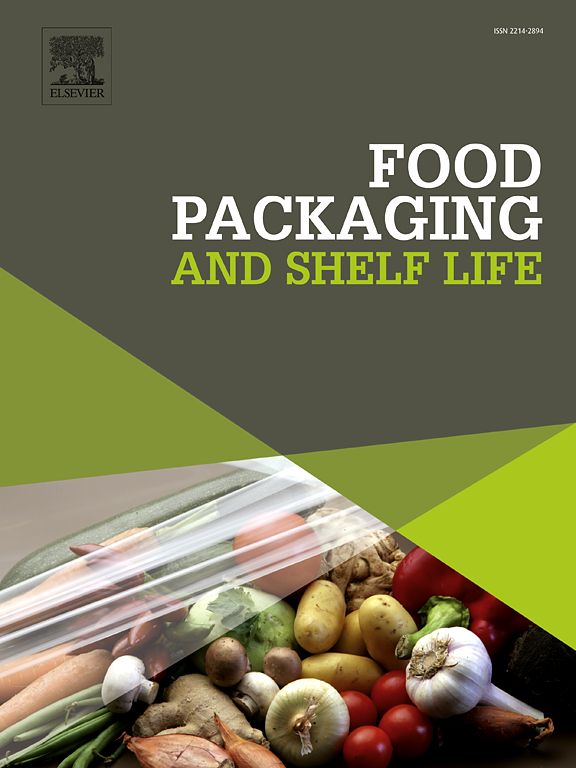Encapsulation of cinnamaldehyde with protein-based nanoemulsions for strawberry preservation: Influence of protein types
IF 10.6
1区 农林科学
Q1 FOOD SCIENCE & TECHNOLOGY
引用次数: 0
Abstract
This study investigated the encapsulation of cinnamaldehyde with three types proteins (soy 7S, whey protein and sodium caseinate) for strawberry preservation, and illustrated the related mechanism of the sustained release ability of CA-loaded nanoemulsions from the perspective of protein-cinnamaldehyde interactions. The results of FTIR, intrinsic fluorescence, and molecular docking indicated that the dominant interactions between the protein and cinnamaldehyde were mainly hydrophobic interaction and hydrogen bonds, of which, the interaction between cinnamaldehyde and SC was the strongest with the highest binding energy. The particle size of CA-loaded nanoemulsion formed by SC was the smallest (296 nm), but its release rate of cinnamaldehyde was the slowest. These results indicated that the exchange rate of bioactive compounds in nanoemulsion with the external environment was not only affected by the size of droplets, but also strongly affected by the interaction between bioactive compounds and interfacial proteins. A slowly release rate of cinnamaldehyde represented sustained antimicrobial activity. However, in practical preservation applications, not only the type of antibacterial agent and wall material should be considered, but also the influence of the concentration of antibacterial agent released in the environment should be taken into consideration.
蛋白质基纳米乳包封肉桂醛用于草莓保鲜:蛋白质类型的影响
本研究研究了三种蛋白(大豆7S、乳清蛋白和酪蛋白酸钠)包封肉桂醛用于草莓保鲜,并从蛋白-肉桂醛相互作用的角度阐述了载钙纳米乳缓释能力的相关机制。FTIR、本特征荧光和分子对接结果表明,该蛋白与肉桂醛的主要相互作用为疏水相互作用和氢键相互作用,其中肉桂醛与SC的相互作用最强,结合能最高。SC负载ca形成的纳米乳粒径最小(296 nm),但其释放肉桂醛的速度最慢。这些结果表明,纳米乳中生物活性化合物与外界环境的交换速率不仅受液滴大小的影响,还受到生物活性化合物与界面蛋白相互作用的强烈影响。肉桂醛释放缓慢,具有持续的抑菌活性。但在实际防腐应用中,不仅要考虑抗菌剂的种类和壁材,还要考虑环境中释放的抗菌剂浓度的影响。
本文章由计算机程序翻译,如有差异,请以英文原文为准。
求助全文
约1分钟内获得全文
求助全文
来源期刊

Food Packaging and Shelf Life
Agricultural and Biological Sciences-Food Science
CiteScore
14.00
自引率
8.80%
发文量
214
审稿时长
70 days
期刊介绍:
Food packaging is crucial for preserving food integrity throughout the distribution chain. It safeguards against contamination by physical, chemical, and biological agents, ensuring the safety and quality of processed foods. The evolution of novel food packaging, including modified atmosphere and active packaging, has extended shelf life, enhancing convenience for consumers. Shelf life, the duration a perishable item remains suitable for sale, use, or consumption, is intricately linked with food packaging, emphasizing its role in maintaining product quality and safety.
 求助内容:
求助内容: 应助结果提醒方式:
应助结果提醒方式:


